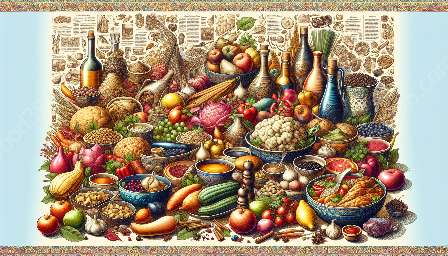Traditional food cultivation practices have been vital to human societies for centuries, influencing early agricultural practices and shaping the development and evolution of food culture. These time-honored methods have sustained their relevance and importance, perpetuating a deep-rooted connection between people, the land, and their culinary heritage.
Early Agricultural Practices and Traditional Food Cultivation
Ancient civilizations relied on various traditional food cultivation practices that have withstood the test of time. These methods were closely intertwined with early agricultural practices, laying the foundation for sustainable food production. One such practice is the use of terracing, a technique that dates back to ancient Mesopotamia and continues to be employed in regions like Southeast Asia and Peru. The construction of terraces helps control erosion, conserves water, and facilitates the cultivation of crops on steep slopes.
Another enduring practice is crop rotation, which has been observed in agricultural communities across different continents. By alternating the types of crops grown on the same land, this method promotes soil fertility, minimizes the risk of pests and diseases, and contributes to long-term agricultural sustainability.
Beyond land-based cultivation, traditional fishing and aquaculture techniques also form an integral part of early agricultural practices. Indigenous communities around the world have honed their knowledge of marine and freshwater ecosystems, developing sustainable methods such as fish traps, net fishing, and tidal fishing to harvest aquatic resources without compromising the ecological balance.
Origin and Evolution of Food Culture
The preservation of traditional food cultivation practices has significantly shaped the development and evolution of food culture. These practices have not only sustained the availability of diverse and nutritious food sources but have also fostered a profound connection between people and their cultural identity.
For example, the terraced fields of Southeast Asia, particularly in regions like Bali and the Philippines, are not only crucial for rice cultivation but also serve as iconic landscapes that reflect the symbiotic relationship between human communities and the natural environment. The cultural significance of these landscapes is celebrated through rituals, festivals, and artistic expressions, emphasizing the profound connection between traditional agricultural practices and cultural heritage.
Moreover, traditional food cultivation practices have played a pivotal role in shaping culinary traditions and dietary patterns across different regions. The use of heirloom seeds, traditional crop varieties, and indigenous farming techniques has contributed to the diversity of flavors and ingredients in global cuisines, encapsulating the rich tapestry of food culture.
Additionally, traditional preservation methods such as fermentation, sun-drying, and smoking have not only extended the shelf life of food but have also given rise to distinct culinary traditions. These preserved foods, deeply rooted in cultural practices, have become emblematic of regional identity and serve as a testament to the ingenuity of ancestral food preservation techniques.


